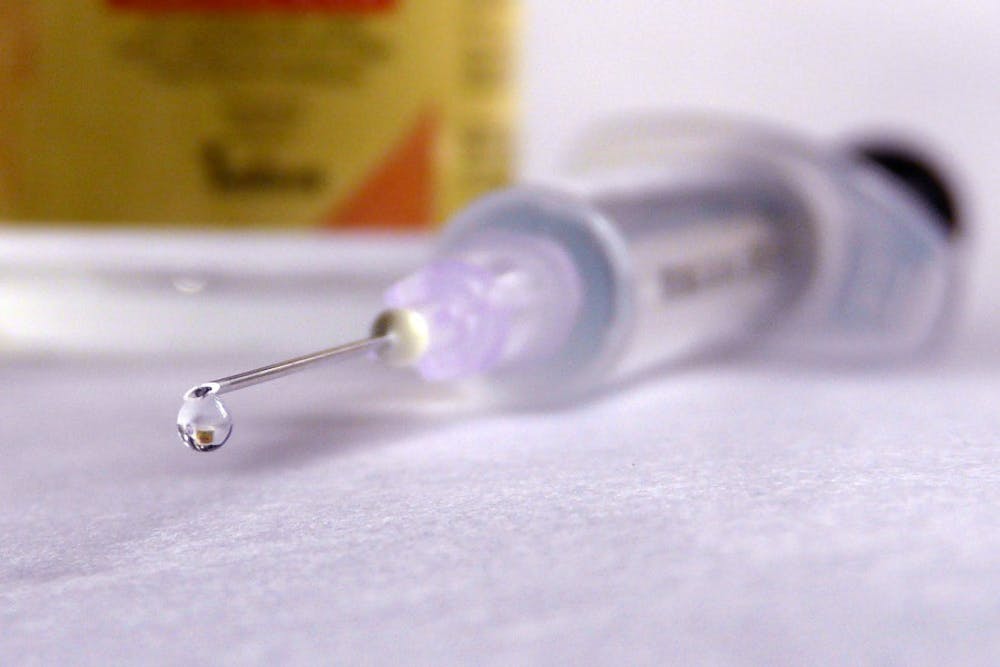Indiana governor lifts needle exchange program ban to prevent spread by intravenous drug use
By Emily Williams, Senior Staff Writer
Eighty-nine people in Austin, Indiana, have been diagnosed with HIV over the past few months, prompting concern in other areas with high rates of intravenous drug usage.
The cases have been traced to the illegal use of the prescription opiate Opana. Abuse of the drug was first seen in rural areas in 2012 after the opiate OxyContin was reformulated. In comparison, Opana is now more potent and easier to inject than OxyContin.
Some of the first deaths from overdose occurred in the same Indiana county experiencing the HIV outbreak. From January through March of 2012, nine people in Scott County died from overdoses of Opana.
Indiana's governor, Mike Pence, has temporarily lifted the statewide ban on needle exchange programs, which provide citizens with sterilized needles, in order to help quell the outbreak. The program has gotten off to a slow start, however, with only four visitors reported by the Indiana State Department of Health since it opened Monday.
In Ohio, however, needle exchange programs are legal. The Cincinnati Exchange Project, launched in February of last year, provides participants with a clean syringe for every used one they bring, with the goal of preventing the spread of diseases like HIV among intravenous drug users.
Clients do not need to bring an ID to receive needles, and are required only to provide the name of their county and their zip code. According to the director of the project, Libby Harrison, many of their clients come from Butler County.
"It's a confidential service," said Harrison. "We create a code to know them by, and we try to makes things as easy as possible."
Although some critics of these programs argue they enable drugs users, Harrison said the program has been successful in providing participants not just with clean needles, but with access to free HIV and Hepatitis C testing and referrals to drug treatment and mental health services.
In its first year, 10 percent of the program's clients have received treatment for drug addiction and 5 percent for Hepatitis C infections, said Harrison.
According to Harrison, needle exchange programs that also provide access to testing, health care and education are essential to keeping a similar outbreak from occurring in other areas with high injection drug use.
"We all feel very sad for [the Indiana community], but we're also glad that in our community we have a tool to deal with it," she said.
Injection drug use has been on the rise in Butler County, particularly the use of heroin. The Butler County Coroner's Report for last year determined that deaths from drug overdose were greater than those from natural causes. Of the 137 deaths from overdose in the county, 75 percent were caused by heroin.
As of now, the Ohio Department of Health's statistics on HIV do not show any significant link between injection drug use and HIV in the Butler County area.
Twenty-seven of the 1,180 HIV cases reported as of June 2014 from Ohio's 88 counties, or roughly 2 percent, were Butler County residents. Butler County's population accounts for about 3 percent of the state population, according to the United States Census Bureau.
Of those 27 cases in Butler County, none were reported to have been transmitted from injection drug use only and just one from both sexual contact or injection drug use.
Nineteen of the 1,180 cases in the state were reportedly transmitted by injection drug use only and 40 by both injection drug use or sexual contact.
Champaign, Franklin, Hamilton and Montgomery Counties - four of the five counties with the highest rate of reported cases of HIV in 2013, are also within the region of Ohio that the Mental Health and Addiction Services has dubbed a heroin hot spot.
Erin Harris, the director of the Emergency Department for the McCullough-Hyde Memorial Hospital in Oxford, said she has seen an increase in the amount of people admitted for heroin overdose over the past year.
However, she said, the recent outbreak in Indiana will not change the precautions that are taken at the hospital. According to Harris, universal precautions have always been used at the hospital to prevent the transmission of diseases such as HIV.
"It's not something to get scared about," said Harris. "It's something to be aware about."

